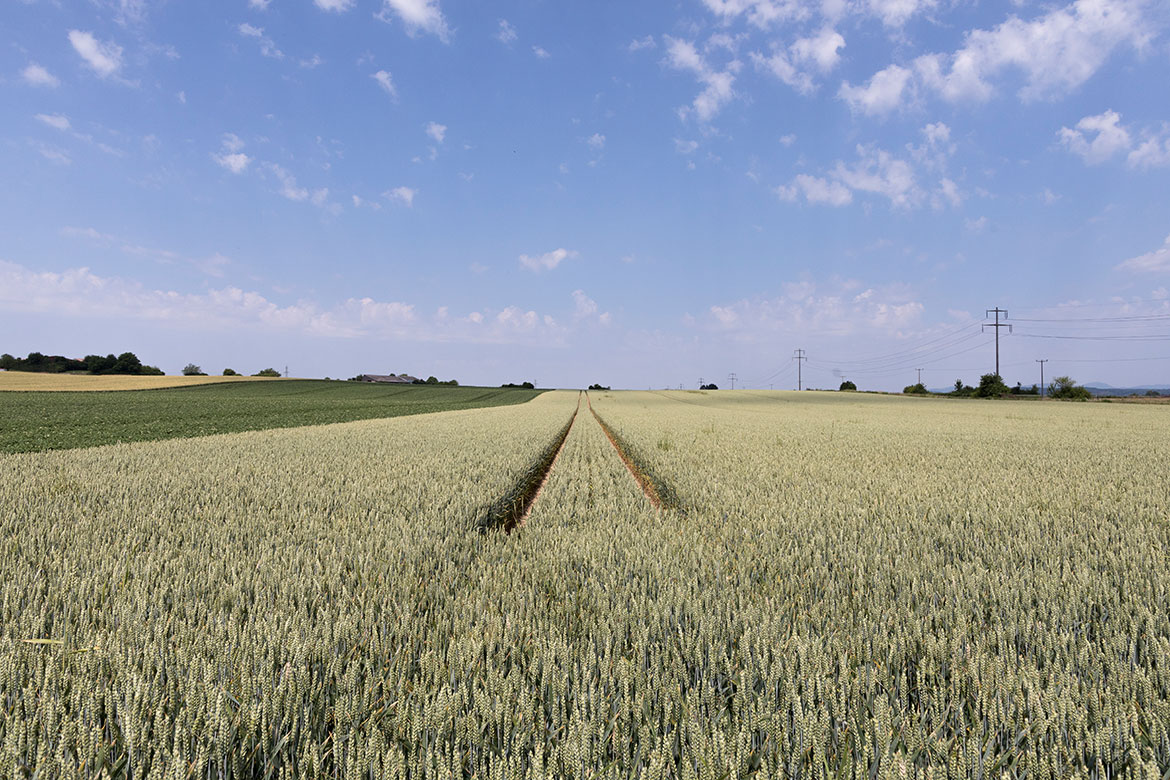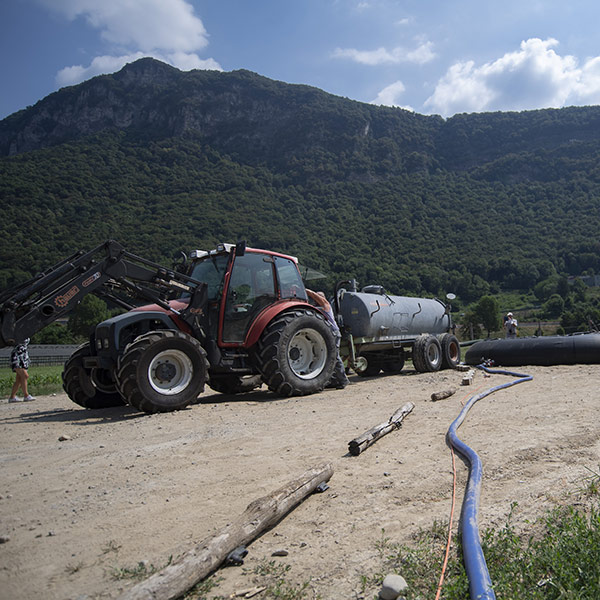CLIMATE MODELLING
The woes of winter wheat
Temperature, rainfall and water vapour can ruin crops of winter wheat – this is the conclusion of an innovative model capable of identifying the relevant weather variables for extreme climate events.

A new climate model could help to minimise crop losses for wheat. | Image: Gaetan Bally/Keystone
Extreme climate events such as heatwaves, droughts and floods can result in a massive reduction in the yield of an agricultural crop. The exact impact in an individual case depends on many meteorological parameters and their interactions. The climate researcher Jakob Zscheischler from the University of Bern has simulated the influence of these variables on yields of winter wheat, and has also identified the relevant impact of differently sized climate events. Besides rainfall and the temperature, it transpires that it is the water content of the air that is most decisive – more precisely, the saturation deficit of water vapour. “We should pay greater attention to this vapour pressure deficit”, says Zscheischler.
To carry out these calculations, Zscheischler’s team has been collaborating with colleagues from several other universities to create models simulating crop yields for winter wheat in the northern hemisphere over a period of 1,600 years. Their analyses took 11 different meteorological variables into consideration, whose contribution to severe yield losses could be quantified. They found that the vapour pressure deficit in the early summer is decisive in all regions. Further significant factors that are less surprising are the rainfall, the temperature and the number of days of frost.
“Vapour pressure deficit is often overlooked in prognoses, even though its significance for plant growth is well known”, says Zscheischler. It tells us how much moisture is actually in the atmosphere in comparison to the maximum that it can absorb. A large deficit is bad for plants because they are then barely able to assimilate CO2, and cannot grow any more. Zscheischler believes that their model can have a practical application by providing better seasonal prognoses. These in turn can help us to avoid yield losses in winter wheat. It is also important to the modellers that their methodology is applicable to further climate threats. “With this approach, we can even model floods or wildfires”.




